The 4% rule
description: a rule of thumb used in finance which suggests that retirees can withdraw 4% of their portfolio each year to fund their living expenses without depleting their savings
14 results
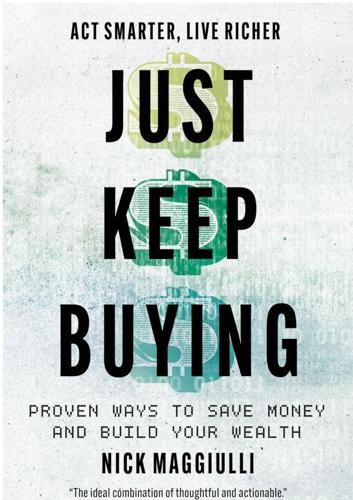
Just Keep Buying: Proven Ways to Save Money and Build Your Wealth
by
Nick Maggiulli
Published 15 May 2022
This was true despite the fact that the withdrawal amount grew by 3% each year to keep up with inflation.⁴⁹ Therefore, if someone had a $1 million investment portfolio, they would have been able to withdraw $40,000 in their first year, $41,200 in their second year, and so forth for at least 30 years before running out of money. In fact, running out of money while using the 4% rule has been historically unlikely. When expert financial planner Michael Kitces did an analysis of the 4% rule going back to 1870, he found that it, “quintupled wealth more often than depleting principal after 30 years.”⁵⁰ But despite its overwhelming success, the 4% rule seems to be the limit when it comes to annual withdrawal rates. When Bengen tested a 5% withdrawal rate, he found that it was too high to consistently work throughout history.
…
This is why the Nobel Laureate William Sharpe called retirement the “nastiest, hardest problem in finance.” If it were easy, there wouldn’t be an entire industry dedicated to helping people navigate this period of their lives. Despite the difficulty of the problem, there are some simple rules you can use to determine when you can retire. One of the simplest is called The 4% Rule. The 4% Rule William Bengen was trying to figure out how much money retirees could withdraw from their portfolios each year without running out of money. In 1994 he published research that would revolutionize the financial planning world. Bengen found that retirees throughout history could have withdrawn 4% of a 50/50 (stock/bond) portfolio annually for at least 30 years without running out of money.
…
Given we know that you can spend 4% of your total retirement savings in your first year, then we know that: 4% × Total Savings = Annual Spending Using a fraction instead of a percentage we get: 1/25 × Total Savings = Annual Spending Multiply both sides by 25 to solve for Total Savings, we get: Total Savings = 25 × Annual Spending Tada! To follow the 4% rule, you would need to save 25 times your expected spending in your first year of retirement. When you’ve reached this total amount of savings, you can retire. This is why I used this guideline in chapter 5 when discussing how getting a raise can affect your retirement savings. It was the 4% rule in disguise all along. Fortunately, you will probably need to save far less than 25 times your annual expenses to meet your retirement needs. Assuming you will get some sort of guaranteed income during retirement (for example from Social Security), then you only need to save 25 times your expected spending above this future income.

Retire Before Mom and Dad
by
Rob Berger
Published 10 Aug 2019
What’s so special about having 25x our annual expenses? The answer has to do with what’s called the 4% rule. Developed by financial planner William Bengen in the early 1990s, the 4% rule is a guideline on how much of our Freedom Fund we can spend each year without running out of money. It was developed with retirees in mind, but we can use it here as well. If you spend $50,000 a year, you’ll reach Level 7 when you have saved $1,250,000 ($50,000 x 25). Four percent of $1,250,000 just happens to equal – you guessed it – $50,000. We’ll examine the 4% rule shortly. Sixth, the 7 Levels give us a compelling framework with which to understand decisions we make in our everyday financial lives.
…
And that brings us to something called the 4% Rule. The rule is designed to provide an easy way to determine how much of your nest egg you can spend each year without running out of money. As the name of the rule suggests, in year one you can spend 4% of your investments. In each year following, you adjust the amount you spent the previous year by the rate of inflation. It’s not guaranteed that your money will last in retirement, as this depends in part on other factors such as actual investment returns and inflation. In the words of Captain Barbossa, think of it more as the 4% Guideline than the 4% Rule. But it’s considered a reasonably safe approach to retirement spending.
…
But it’s considered a reasonably safe approach to retirement spending. To put it bluntly, the 4% Rule gives us a reasonable chance of dying before our money runs out. As noted earlier, financial planner William Bengen first wrote about the 4% rule in 1994.15 Then three professors at Trinity University conducted what has become known as the Trinity Study.16 The 1998 study further supported Bengen’s findings. At first glance, 4% might seem low. We are assuming a nominal rate of return of 9.3%. If that’s a reasonable assumption, what happens to the other 5.3%? Good question. Keep in mind three things: We must account for inflation.
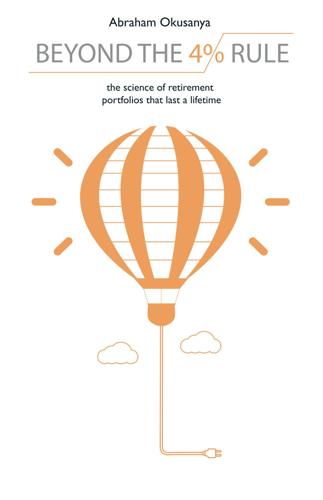
Beyond the 4% Rule: The Science of Retirement Portfolios That Last a Lifetime
by
Abraham Okusanya
Published 5 Mar 2018
BEYOND THE 4% RULE BEYOND THE 4% RULE The science of retirement portfolios that last a lifetime Abraham Okusanya MSc, CFP, AFPS, Chartered MCSI To Funmi and Adorabelle, the centre of my universe. ISBN-13: 978-1985721647 ISBN-10: 1985721643 First published in the United Kingdom in 2018 via CreateSpace Copyright © 2018 Abraham Okusanya All rights reserved. No part of this book can be reproduced without the written permission of Abraham Okusanya. For further information please visit www.beyond4percent.com Book Design: Sheer Design and Typesetting Contents Introduction: retirement reinvented Annuity: the beginning of the end?
…
Journal of Financial Planning, March 2006. Klinger, William J. 2016. “Guardrails to Prevent Potential Retirement Portfolio Failure.” Journal of Financial Planning 29 (10): 46–53. The Ratcheting Safe Withdrawal Rate – A More Dominant Version Of The 4% Rule? https://www.kitces.com/blog/the-ratcheting-safe-withdrawal-rate-a-more-dominantversion-of-the-4-rule/ Bengen, William P. (2001): Conserving Client Portfolios During Retirement, Part IV. Journal of Financial Planning; May2001, Vol. 14 Issue 5, p110 Under the Cliff Edge Scenario, the Floor & Ceiling and Ratcheting Rule essentially follow the same path as the Baseline strategy, which is why they don’t show up on the chart.
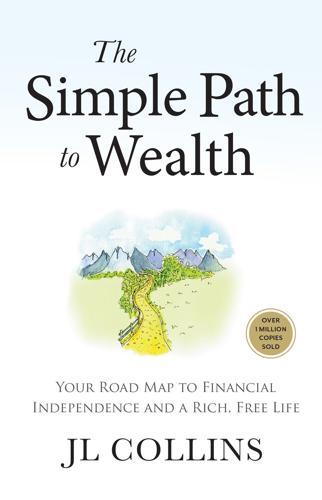
The Simple Path to Wealth (Revised & Expanded 2025 Edition): Your Road Map to Financial Independence and a Rich, Free Life
by
JL Collins
He’s had a full and varied life. A life that accumulated a little pension, a bit of VA comp, and Social Security. Along the way, he’s learned that stuff just ain’t that important. And once you no longer value stuff, the good life just ain’t that pricey. This is something to think about the next time you are worried about the 4% rule working out or having gotten a late start on retirement planning. By all means, plan, save, and invest for your future. But keep in mind mental toughness, the ability to roll with the punches, and lifestyle flexibility are where true security lies. Note If you are interested in the original expanded versions of these case studies or a few other ones, you’ll find them on my blog. 1 Calculator A: https://dqydj.net/sp-500-return-calculator/. 2 Calculator C: https://www.calculator.net/investment-calculator.html.
…
Now you’re sitting on your assets and wondering just how much you can spend each year and not run out. This could be stressful, but it really should be fun. You might even be cheeky enough to ask, “What percent of his own assets does JL spend?” We’ll get to that. You don’t have to have read far in the retirement literature to have come across the “4% rule.” Unlike most common advice, this one holds up to our beady-eyed scrutiny pretty well, even though it is really very little understood. Turns out, it took a rocket scientist to come up with it. After running his family’s business until it was sold in 1987, William P. Bengen (MIT BS in aeronautics and astronautics) moved to California to launch Bengen Financial Services, a fee-only practice.
…
Instead, my wife (who handles all our day-to-day finances) simply logged on to Vanguard and transferred whatever she needed whenever she noticed the checking account getting low. 6. This withdrawal approach may seem a bit haphazard, and I guess it is. But as explained in the last chapter, we don’t feel the need to obsess over staying precisely within the 4% rule. 7. Instead, we keep a simple spreadsheet and log in our expenses by category as they occur. This allows us to see where the money is going and to think about where we might cut should the market plunge and the need arise. 8. Before reaching RMDs, each year I’d calculate what income we have, and—consistent with remaining in the 12% tax bracket—I’d shift as much as I could from our regular IRAs to our Roths.
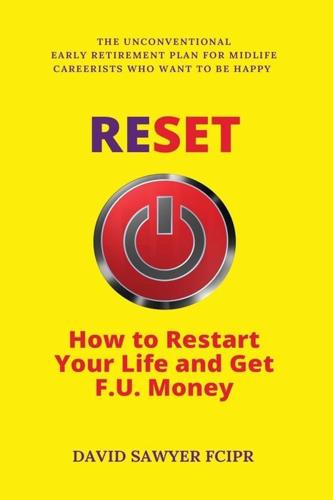
Reset: How to Restart Your Life and Get F.U. Money: The Unconventional Early Retirement Plan for Midlife Careerists Who Want to Be Happy
by
David Sawyer
Published 17 Aug 2018
[323] “pretty easily carries you to the end”: “Michael Kitces – The 4% Rule and Financial Planning... – Mad Fientist.” toreset.me/323. [324] “Determining Withdrawal Rates Using Historical Data”: “DETERMINING WITHDRAWAL RATES USING... – Retail Investor.org.” toreset.me/324. [325] famous 1998 Trinity Study: “Journal Portfolio Success Rates: Where to Draw the Line – OneFPA.” toreset.me/325. [326] “The Trinity Study And Portfolio Success Rates (Updated To 2018)”: “The Trinity Study And Portfolio Success Rates (Updated To 2018).” 16 Jan. 2018, toreset.me/326. [327] “make it to the good returns”: “Michael Kitces – The 4% Rule and Financial Planning ... - Mad Fientist.” toreset.me/327
…
[329] 4% initial withdrawal rate: “Ratcheting The Safe Withdrawal Rate For Income Upside – Kitces.com.” 3 Jun. 2015, toreset.me/329. Based on US index data between 1871 and 1985 and a 60%/40% equity/bond split. [330] as the years go by: “Safe Withdrawal Rates With Decreasing Retirement Spending.” 22 Feb. 2017, toreset.me/330. [331] “Does The 4% Rule Work Around The World?”: “Does The 4% Rule Work Around The World? | Retirement Researcher.” 30 Jun. 2016, toreset.me/331. [332] ideal SWR allocation: Ibid. Wade’s research found that with an 80/20 equity/bond split, UK investors investing solely in the UK market over a 30-year period would have a 100% success rate of dying before their stash ran out, with an SWR of 3.77%.
…
The Oracle of Pfau So, if you’re based in the US, you’re going to die within 30 years, and your asset allocation is anything between 50/50 bonds/stocks and 100% stocks, you’re almost on to a sure thing. I would 100% plan for an SWR of 4%. There’s no way I’m arguing with Pete Adeney, JL Collins and Michael Kitces. However, if you live somewhere else, you need to consult the Oracle of Pfau, by googling “Does The 4% Rule Work Around The World[331]?” When we delve deep into Pfau’s research, we discover that the UK SWR for a 100% equity portfolio in retirement is about 3.64%, assuming you’re 100% invested in UK equities. While a 100% equity portfolio in retirement offers the best returns over time, it also creates the most risk.

The Simple Path to Wealth: Your Road Map to Financial Independence and a Rich, Free Life
by
J L Collins
Published 17 Jun 2016
So, you’ve followed the simple path big three: You’ve avoided debt You’ve spent less than you’ve earned You’ve invested the surplus Now you’re sitting on your assets and wondering just how much you can spend each year and not run out. This could be stressful, but it really should be fun. You might even be cheeky enough to ask, “What percent of his own assets does Jim spend?” We’ll get to that. You don’t have to have read far in the retirement literature to have come across the “4% rule.” Unlike most common advice, this one holds up to our beady-eyed scrutiny pretty well, even though it is really very little understood. Back in 1998, three professors from Trinity University sat down and ran a bunch of numbers. Basically they asked what would happen at various withdrawal percentage rates to various portfolios, each with a different mix of stocks and bonds, over 30 year periods depending on what year the withdrawals were started.
…
Instead my wife (who handles all our day-to-day finances) simply logs on to Vanguard and transfers whatever she needs whenever she notices the checking account getting low. This withdrawal approach may seem a bit haphazard, and I guess it is. But as explained in the last chapter, we don’t feel the need to obsess over staying precisely within the 4% rule. Instead, we keep a simple spreadsheet and log in our expenses by category as they occur. This allows us to see where the money is going and to think about where we might cut should the market plunge and the need arise. Each year I calculate what income we have and—consistent with remaining in the 15% tax bracket—I shift as much as I can from our regular IRAs to our Roths.
…
Here’s what I would not do I would not set up a 4% annual withdrawal plan and forget about it. As we saw in the last chapter, the Trinity Study set out to determine how much of a portfolio one could spend over decades and still have it survive. Adjusting each year for inflation, withdrawals of 4% annually were found to have a 96% success rate. This became the 4% Rule designed to survive the vast majority of stock downturns so you wouldn’t have to worry about market fluctuations in your retirement. It made for a great academic study and it is heartening that in all but a couple of cases the portfolios survived just fine for 30 years. In fact, most of the time they grew enormously even with the withdrawals taking place.

The Missing Billionaires: A Guide to Better Financial Decisions
by
Victor Haghani
and
James White
Published 27 Aug 2023
Unfortunately, there is just no escaping this sequence of returns risk, but the approach we are suggesting recognizes the heightened risk of the early years and takes into account the many possible outcomes, including outcomes with the same average return but experienced in different sequences. How Does This Compare to Other Popular Rules? One frequently used method for thinking about spending in retirement is the “4% rule.” It's relatively simple: take the value of all of your investments at retirement, calculate 4% of that, and spend that dollar amount every year, adjusted for inflation…and hope you don't run out of money before you reach the end of your days. The genesis of this rule was a 1994 article by Bill Bengen, a financial adviser in southern California.7 The rule was created using historical data on stock and bond returns over the 50‐year period from 1926 to 1976.
…
The model we are suggesting for Sam based on maximizing her Lifetime Utility calls for reducing spending when her portfolio declines in value and vice versa.9 Table 9.3 compares how Sam would have fared if she retired at the beginning of 2000 and kept a portfolio of 60% US equities and 40% US T‐bills, following a fixed real spending rule of 5% of initial wealth at retirement (Bengen's update to the 4% rule) versus following an optimal spending plan designed to give her the highest Expected Lifetime Utility. We use the spending plan displayed previously in Exhibit 9.1 for this example.10 Despite an average annual return on the portfolio of 5.25% per annum, if Sam followed a rule of spending an inflation‐adjusted constant amount over time, she'd have run out of money sometime in early 2019!
…
The expected spend also drops over time, although not as dramatically as the median spending amount. It's unlikely any endowment is intentionally following this kind of fixed dollar spending policy. However, in personal financial planning, the most prominent spending rule does take exactly this form. It is the “4% rule” we just met in Chapter 9, and it advises retirees to calculate 4% of their savings at retirement, and spend that inflation‐adjusted dollar amount every year.a We include this as our first rule because it so clearly illustrates the close connection between spending risk and investment risk in the long term.

Best Places to Retire: The Top 15 Affordable Towns for Retirement on a Budget (Retirement Books)
by
Clayton Geoffreys
Published 30 Apr 2015
Lincoln City, OR Why is it a Great Place to Retire? Local Community Conclusion Final Word/About the Author Foreword One of the most important things to consider when planning your retirement is where to live. Finding affordable towns to live in can be a challenge in today’s day and age. It’s important you stay as much within the 4% rule as possible (which states that if you withdraw at a rate of four percent of your retirement portfolio, you can sustain your current lifestyle while accounting for inflation). Aside from considering affordability, you also need to consider the overall quality of life that you’ll experience living in that particular town.
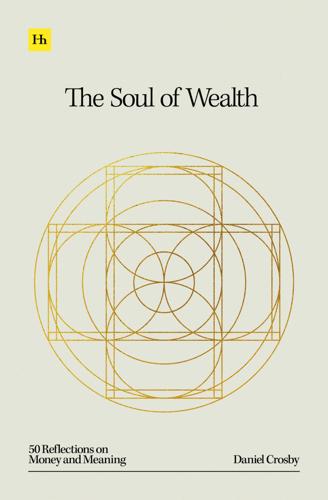
The Soul of Wealth
by
Daniel Crosby
Published 19 Sep 2024
We see this trap in financial planning all the time. Here are just a few general money principles that are all too often interpreted more as gospel rather than mendable: The 4% rule: Also known as the Safe Withdrawal Rate in retirement, this rule of thumb suggests that a retiree can withdraw 4% of their portfolio annually without a significant risk of running out of savings over a 30-year period. While studies show it can work, strictly following the 4% rule can result in financial peril due to both an individual’s circumstances changing and market factors. The 10% annualized equity returns rule: From 1928 through 2022, the S&P 500 had a compounded annual growth rate of 9.7%, according to data from NYU Stern.187 Long-term averages are useful, but they shouldn’t be assumed going forward.
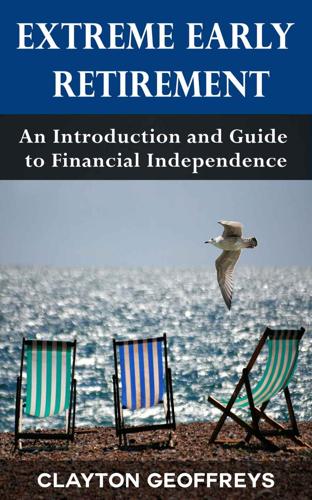
Extreme Early Retirement: An Introduction and Guide to Financial Independence (Retirement Books)
by
Clayton Geoffreys
Published 16 May 2015
Reserve Two Weekends a Month for Family and Relatives Conclusion Final Word/About the Author Foreword A lot of times people believe they need to work until they are well into their 60s in order to achieve financial independence and to retire safely. In today’s day and age, the old model towards retirement is antiquated. Early extreme retirement is now more possible than ever, as long as you as much within the 4% rule as possible (which states that if you withdraw at a rate of four percent of your retirement portfolio, you can sustain your current lifestyle while accounting for inflation). Hopefully from reading Extreme Early Retirement: An Introduction and Guide to Financial Independence, I can provide you with a basic understanding of how many people today are retiring earlier and enjoying life on their terms due to their adoption of this philosophy.

MONEY Master the Game: 7 Simple Steps to Financial Freedom
by
Tony Robbins
Published 18 Nov 2014
When I was young, I thought that money was the most important thing in life; now that I am old, I know that it is. —OSCAR WILDE THE 4% RULE IS DEAD In the early 1990s, a California financial planner came up with what he called the “4% rule.” The gist is that if you wanted your money to last your entire life, you could take out 4% per year if you had a “balanced portfolio” invested in 60% stocks and 40% bonds. And you could increase the amount each year to account for inflation. “Well, it was beautiful while it lasted,” recounts a 2013 Wall Street Journal article entitled “Say Goodbye to the 4% Rule.” Why the sudden death? Because when the rule came into existence, government bonds were paying over 4%, and stocks were riding the bull!
…
John is now 65 and has accumulated $500,000 (far more than the average American) and is ready to retire. Like most Americans nearing retirement, John is in a “balanced” portfolio (60% stocks, 40% bonds), which, as we learned from Ray Dalio, isn’t balanced at all! Since interest rates are so low, the 4% rule won’t cut it. John decides that he will need to take out 5%, or $25,000, of his nest egg/Freedom Fund each year to meet his income needs for his most basic standard of living. When added to his Social Security payments, he “should” be just fine. And he must also increase his withdrawal each year (by 3%) to adjust for inflation because each year the same amount of money will buy fewer goods and services.
…
Stockbrokers will tell you that by handing your money to an insurance company in exchange for a lifetime income, you are “losing control” of your principal. Let’s look at this a little more thoughtfully. Say you are 60 years old and have accumulated a $1 million nest egg. Your broker advises the traditional approach of stocks and bonds, and you apply the 4% rule for your income (which means you’ll be able to take out $40,000 per year). The reality is you will need every bit of that $40,000 to pay your bills. You know your money needs to be invested, so you really can’t afford to touch your principal. And what happens if the market drops? You don’t want to sell at the bottom, but at the same time, you may also feel that you can’t afford more losses at this stage of life.
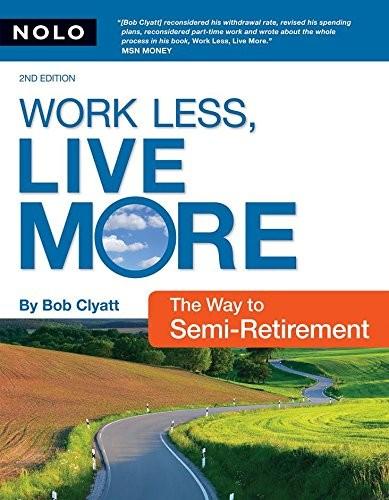
Work Less, Live More: The Way to Semi-Retirement
by
Robert Clyatt
Published 28 Sep 2007
And since the Safe Withdrawal Rate would have ensured successful portfolio survival in nearly any past market period, there is a good chance you’ll do even better than the minimum if financial markets perform even moderately well in the future. 212 | Work Less, Live More Yet even if you happen to retire into a bleak period for financial markets, there is some wiggle room in the 4% Rule, though not a lot. While a 3.5% annual withdrawal rate should leave your portfolio essentially unassailable for life, a 4.5% annual withdrawal, with specific precautionary modifications, has historically done well about 90% of the time in the long run, though it will often fall short over ten- and 20-year timeframes.
…
And you’ll be able to make any changes you feel you need to along the way. TiP For older semi-retirees. The Safe Withdrawal Rate and Method outlined in this chapter are aimed at young semi-retirees who need to sustain themselves on portfolio earnings for 40 years or more. Older semiretirees can certainly withdraw more than the 4% Rule, especially if they are prepared to deplete their portfolios over the course of their remaining lifetimes. If you are in your late 60s or 70s, looking for a bigger withdrawal, and not overly concerned about leaving funds for your heirs, one good approach may be to purchase an annuity with perhaps as much as a quarter or half of your portfolio assets.
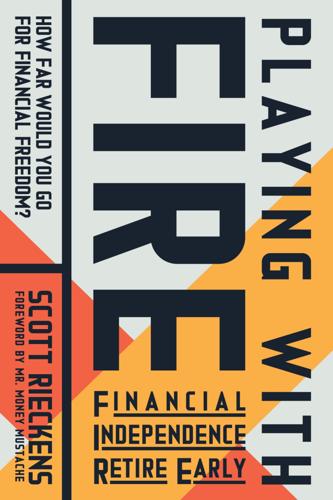
Playing With FIRE (Financial Independence Retire Early): How Far Would You Go for Financial Freedom?
by
Scott Rieckens
and
Mr. Money Mustache
Published 1 Jan 2019
Page 156, I read a Washington Post article about Bend: Nathan Borchelt, “Bend, Ore., a City You’ll Love to Hate,” Washington Post (Travel), October 12, 2012, https://www.washingtonpost.com/lifestyle/travel /bend-ore-the-city-youll-love-to-hate/2012/10/04/9a7e2f10-042e -11e2-91e7-2962c74e7738_story.html. Page 163, Then I remembered an interview with financial expert Michael Kitces: “Michael Kitces — The 4% Rule and Financial Planning for Early Retirement,” Mad Fientist, accessed August 29, 2018, https://www.madfientist.com/michael-kitces-interview. PLAYING WITH FIRE Chapter 12: Finding Our FIRE Friends 200 Page 168, our trip coincided with the island’s heaviest rainfall in recorded history: John Hopewell, “Historic Rain Inundates Kauai, Cutting Off Hawaii Residents and Tourists with Floods and Mudslides,” Washington Post, April 17, 2018, https://www.washingtonpost.com/news /capital-weather-gang/wp/2018/04/17/historic-rain-inundateskauai-cutting-off-hawaii-tourists-with-floods-and-mudslides/?
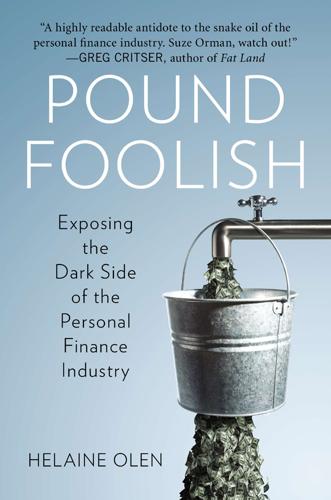
Pound Foolish: Exposing the Dark Side of the Personal Finance Industry
by
Helaine Olen
Published 27 Dec 2012
When financial planner Michael Kitces: “The Big Retirement Gamble,” for Annuity News Now, February 8, 2011. http://www.annuitynewsnow.com/uncategorized/michael-kitces-the-big-retirement-gamble/; also author interview. Take retirement withdrawal rates: Walter Updegrave, “Retirement: The 4 Percent Solution,” Money, August 16, 2007, http://money.cnn.com/2007/08/13/pf/expert/expert.moneymag/index.htm. Glenn Ruffenach, “Is the 4% Rule Still Viable?” Smart Money, February 2, 2012, http://www.smartmoney.com/retirement/planning/is-the-4-percent-rule-viable-1326840051207/; American Century Investments Web site, “Calculate Your Withdrawal Rate,” https://www.americancentury.com/investment_education/withdrawal_rates.jsp Teresa Ghilarducci: author interview.